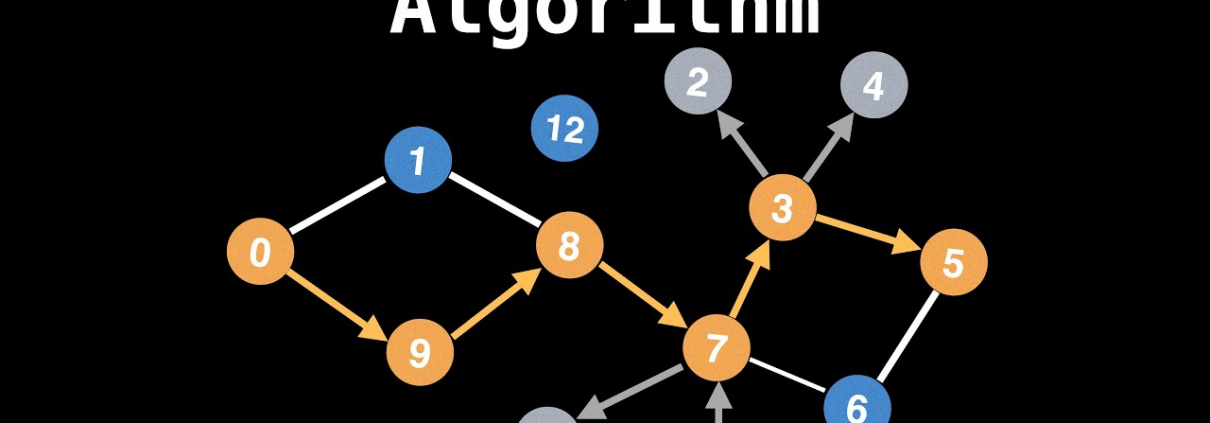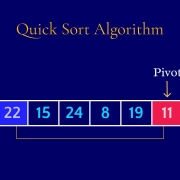Depth-First Search (DFS) Algorithm Guide
In the world of graph theory and algorithms, Depth-First Search DFS (Depth-First Search) is a fundamental and versatile tool. Used to explore and scan graph data structures, this algorithm is indispensable in many areas, including pathfinding, cycle detection, and topological sorting. In this guide, we'll delve into the fundamentals of DFS, its applications, and practical examples using Python. I'll explain this algorithm with examples from my own experience. If you're ready, let's get started!
What is Depth-First Search?
DFS is a scanning algorithm that explores the branches of a graph as deeply as possible. The term "depth-first search" is directly used in the Turkish for "Depth-First Search" in English and is well-established in the literature. After exploring a branch to the end, it goes back and examines the other branches. The basic idea is to systematically visit nodes, mark visited ones, and recursively explore unvisited neighbors.
Basic Components of DFS
To understand DFS, let's look at the basic components:
- Stack (or Recursion)A stack is used to keep track of nodes to be visited. Recursion naturally mimics the behavior of a stack. In Turkish, "stack" is a standard term.
- Visited Cluster: Nodes are marked with a set or array to prevent repeat visits.
- Graph RepresentationA graph is usually represented by an adjacency list or an adjacency matrix. In Turkish, these terms (adjacency list/matrix) are used verbatim.
Steps of the DFS Algorithm
DFS follows these steps:
- Start from the starting node and mark it as visited.
- Select an unvisited neighbor of the current node.
- If there is a neighbor, add it to the stack (or call recursive) and return to step 2.
- If there are no neighbors, rollback to the previous node (remove from the stack or terminate the recursion).
- Repeat steps 2-4 until the stack is empty.
Applications of DFS
DFS is used in many areas of computer science:
- Wayfinding: Finds paths between two nodes in the graph (for example, finding a route on a map).
- Loop Detection: Checks if there are cycles in the graph (e.g., deadlock detection in operating systems).
- Topological Sorting: Performs sorting on directed acyclic graphs (DAGs) (for example, task scheduling).
- Connected Components: Determines the connected parts of the graph.
- Tree Scanning: Performs preemptive, sequential, or post-sequential scanning on trees (a special type of graph).
I once used DFS to identify groups of users (connected components) in a social network analysis, and it made data analysis much easier!
DFS Examples with Python
DFS with Neighborhood List
Let's represent a graph with an adjacency list and implement DFS using a heap:
def dfs(graph, start): visited = set() stack = [start] while stack: node = stack.pop() if node not in visited: print(node, end=' ') # Process the node (change as desired) visited.add(node) stack.extend(neighbor for neighbor in graph[node] if neighbor not in visited) # Example usage graph = { 0: [1, 2], 1: [0, 3, 4], 2: [0, 4], 3: [1], 4: [1, 2] } dfs(graph, 0) # Output: 0 2 4 1 3
In this code:
- We add the starting node to the stack.
- We take a node from the stack and visit it, adding its neighbors to the stack.
- We continue until the stack is empty.
DFS with Adjacency Matrix
When the graph is represented by an adjacency matrix:
def dfs_matrices(matrix, start): n = len(matrix) visited = set() stack = [start] while stack: node = stack.pop() if node not in visited: print(node, end=' ') # Process node (change as desired) visited.add(node) neighbors = [i for i in range(n) if matrix[node][i] == 1 and i not in visited] stack.extend(neighbors) # Example usage matrix = [ [0, 1, 1, 0, 0], [1, 0, 0, 1, 1], [1, 0, 0, 0, 1], [0, 1, 0, 0, 0], [0, 1, 1, 0, 0] ] dfs_matris(matrix, 0) # Output: 0 2 4 1 3
In this code, the 1s of the matrix represent edges. DFS finds neighbors and continues scanning the stack.
Conclusion
Depth-First Search (DFS) is a powerful algorithm for systematically exploring graphs. It's used in many areas, such as path finding, cycle detection, and topological sorting. With the examples in this guide, you've learned how DFS works and how to apply it to your projects. I used DFS to find the shortest path in a maze-solving project, and the results were both fast and impressive!
What problems have you solved with DFS? Have an interesting experience? Share it in the comments, let's discuss it together! For more algorithm tips, check out my blog or contact me!
Notes
- Turkish Equivalents of Terms:
- Depth-First Search (Depth-First Search): Established, correct and widespread in Turkish.
- Stack (stack), neighborhood list (adjacency list), adjacency matrix (adjacency matrix): Standard in the machine learning and algorithm literature.
- Visited cluster (visited set): Correct and common.
- Topological sorting (topological sorting): Standard term.






